I once managed to get a multi-screen program working by having everything (including screens) defined in a single .kv file.
By using root.current (in .kv file) or self.root.current (in Python file) I was able to switch between screens. However, the .kv file grows very large and hard to maintain once there are several screens with many widgets.
This time I tried to define Screens in separate .kv files, but I can't get switching between screens to work. Every attempt so far resulted in an error (invalid syntax, screen name not defined...).
Is there a way (or ways) to switch between screens, defined in separate .kv files? Here are the files I am using:
main.py
from kivy.app import App
class MainApp(App):
pass
if __name__ == '__main__':
MainApp().run()
main.kv:
#:include screen_1.kv
#:include screen_2.kv
#:import NoTransition kivy.uix.screenmanager.NoTransition
ScreenManager:
transition: NoTransition()
Screen:
name: "main_screen"
BoxLayout:
orientation: "vertical"
Label:
text: "main screen"
Button:
text: "to screen 1"
on_press: app.root.current = "screen_1"
Button:
text: "to screen 2"
on_press: app.root.current = "screen_2"
screen_1.kv:
Screen:
name: 'screen_1'
BoxLayout:
orientation: "vertical"
Label:
text: "Screen 1"
Button:
text: "to main screen"
on_press: app.root.current = "main_screen"
Button:
text: "to screen 2"
on_press: app.root.current = "screen_2"
screen_2.kv:
Screen:
name: 'screen_2'
BoxLayout:
orientation: "vertical"
Label:
text: "Screen 2"
Button:
text: "to main screen"
on_press: app.root.current = "main_screen"
Button:
text: "to screen 1"
on_press: app.root.current = "screen_1"


